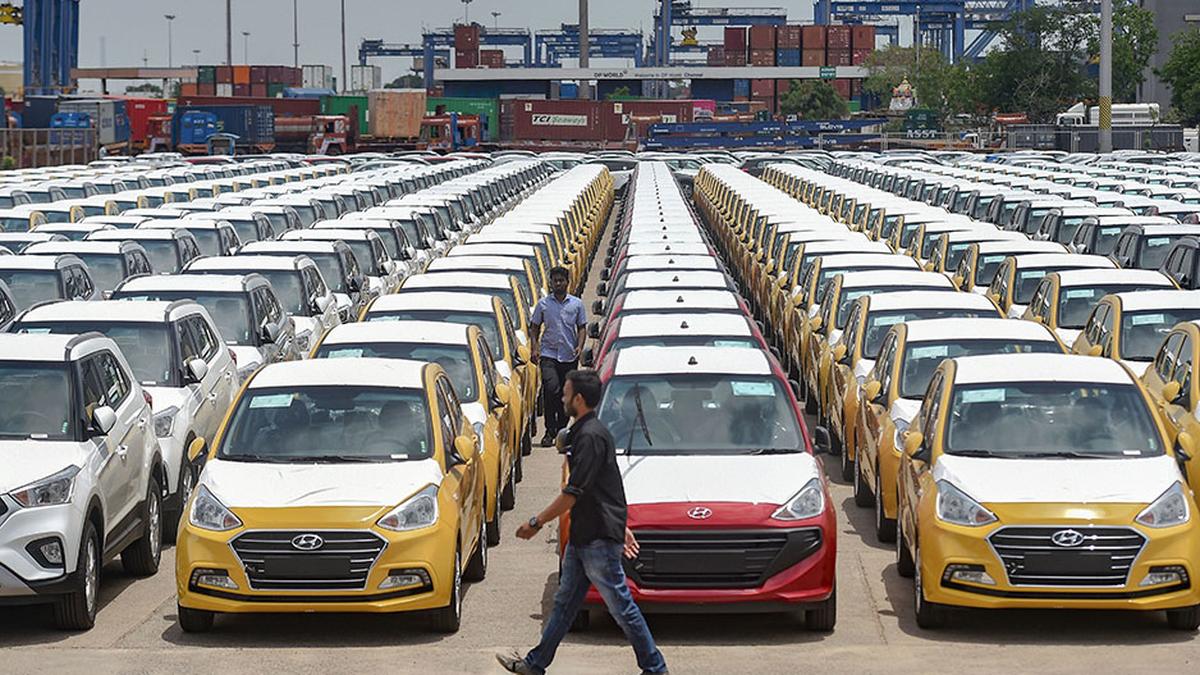Passenger vehicles wholesales rise 26.73% to record 38.9 lakh units in 2022-23: SIAM
Domestic passenger vehicle wholesales grew 26.73% to a record high of over 38.9 lakh units in 2022-23, riding on a demand surge for utility vehicles, the Society of Indian Automobile Manufacturers said on Thursday.
Dispatches of passenger vehicles (PVs) from manufacturers to dealers stood at 38,90,114 units in the fiscal ended March 31, 2023, compared with 30,69,523 units in 2021-22, as per the latest data released by SIAM.
The previous highest wholesales of PVs were recorded in 2018-19 at 33,77,436 units.
The growth of the PV sales in FY23 was led by utility vehicles – 20,03,718 units in FY23 compared with 14,89,219 units in FY22, a growth of 34.55%. The segment now commands a 51.5% share of PV sales.
SIAM President Vinod Aggarwal said 2022-23 had been a year of consolidation post-COVID-19, although supply chain disruptions started again due to the Ukraine conflict.
“However, with efficient management of supply chains and better availability of commodities, especially for the electronics items, prices have moderated over the year, though it remains a concern,” he told reporters here.
Mr. Aggarwal said while the PV segment posted the highest-ever domestic sales, surpassing the previous peak in 2018-19, commercial vehicles posted the second-highest domestic sales and are close to the previous peak of 2018-19.
Commercial vehicle sales were at 9,62,468 units in FY23 compared with 7,16,566 units in FY22.
SIAM Director General Rajesh Menon said commercial vehicles, two-wheelers and three-wheelers segments “are yet to reach the pre-pandemic levels.”
The total two-wheeler sales in FY23 stood at 1,58,62,087 units against 1,35,70,008 units in FY22, a growth of 17%. The segment had witnessed a decline in the previous three consecutive years.
Vehicle wholesales across categories stood at 2,12,04,162 units in 2022-23 compared with 1,76,17,606 units in 2021-22, a growth of 20.36%.
SIAM said challenges remain in entry-level passenger cars and two-wheelers. The entry-level mini cars segment declined by 57% in FY23 compared with the peak levels of FY17.
On the other hand, entry-level scooter sales also declined by 27% in FY23 against the peak level in 2018-19 and that of entry-level motorcycles dropped by 38% in 2022-23 compared with the highest level witnessed in 2018-19, SIAM said.
Asked if meeting regulatory norms, which has resulted in increased prices, affected affordability, Mr. Aggarwal said, “If you look at the industry performance, it has recovered quite well last year despite all the regulatory concerns.”
“The regulatory norms are also required. At the same time, we have to see how do we create more advantages for the consumers through various other means… sometimes when the costs go up, consumers are not immediately able to take the call,” he added.
However, he said, mobility is required and income levels are also improving.
“I’m sure there will be a good balance, which will get created over a period of time and this entry-level will start coming up,” Mr. Aggarwal added.
On the outlook for the new fiscal, he said, “If you look at the overall demand, it is growing and it is moving in the right direction. So, therefore, we should remain very positive about the further growth in the demand in the current year…We are very positive.”
As far as the semiconductor issues are concerned, it seems to have improved, and the better management of supply chains and overall properties are also going to improve, he added.
As per the latest SIAM data, domestic wholesales of passenger vehicles grew 4.47% year-on-year in March to 2,92,030 units.
In March last year, wholesales of passenger vehicles were at 2,79,525 units.
Two-wheeler sales clocked 12,90,553 units in the domestic market last month compared with 11,98,825 units in the year-ago period, SIAM said.
The total vehicle wholesales last month stood at 16,37,048 units against 15,10,534 units a year ago, it added.
For all the latest business News Click Here

